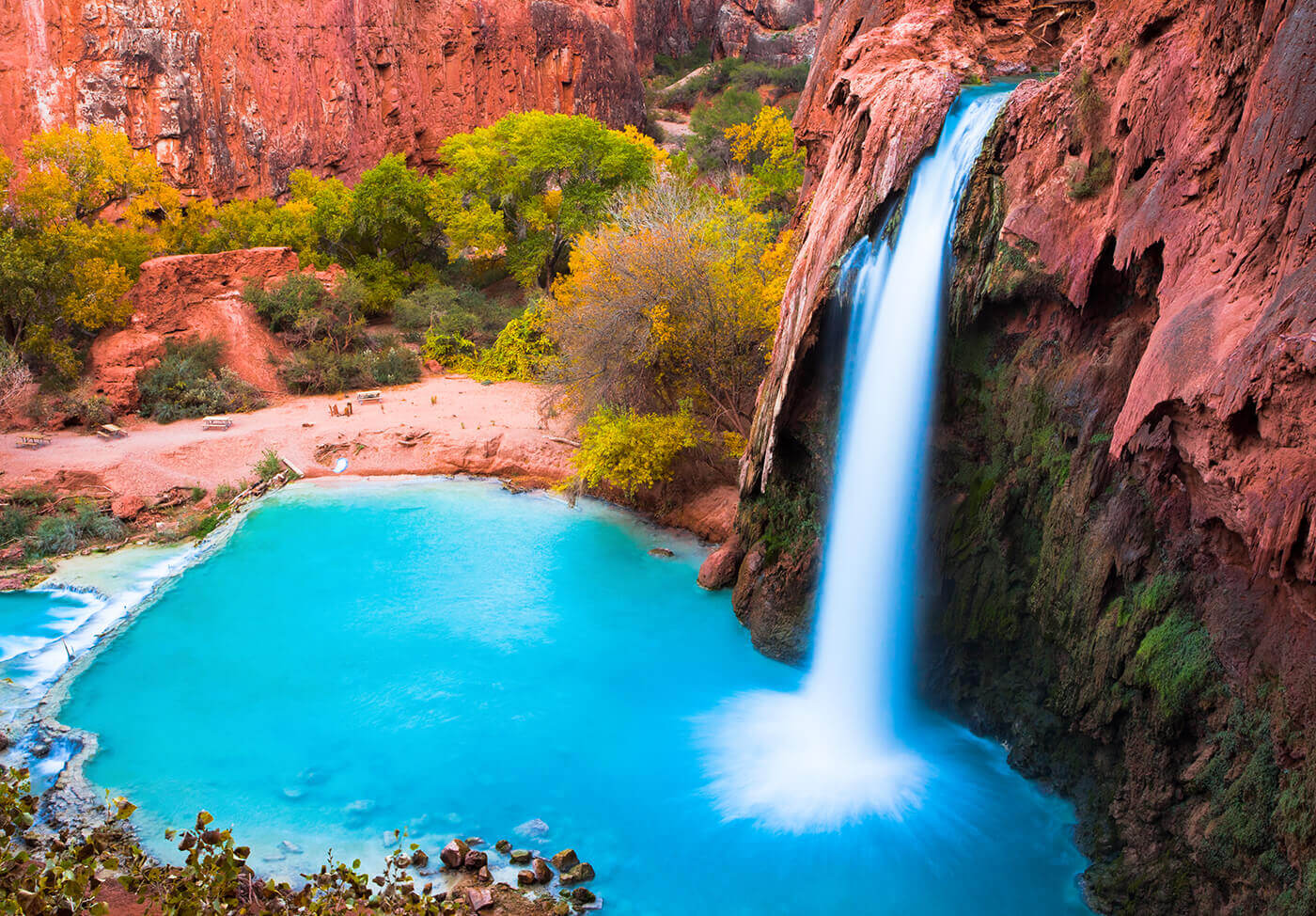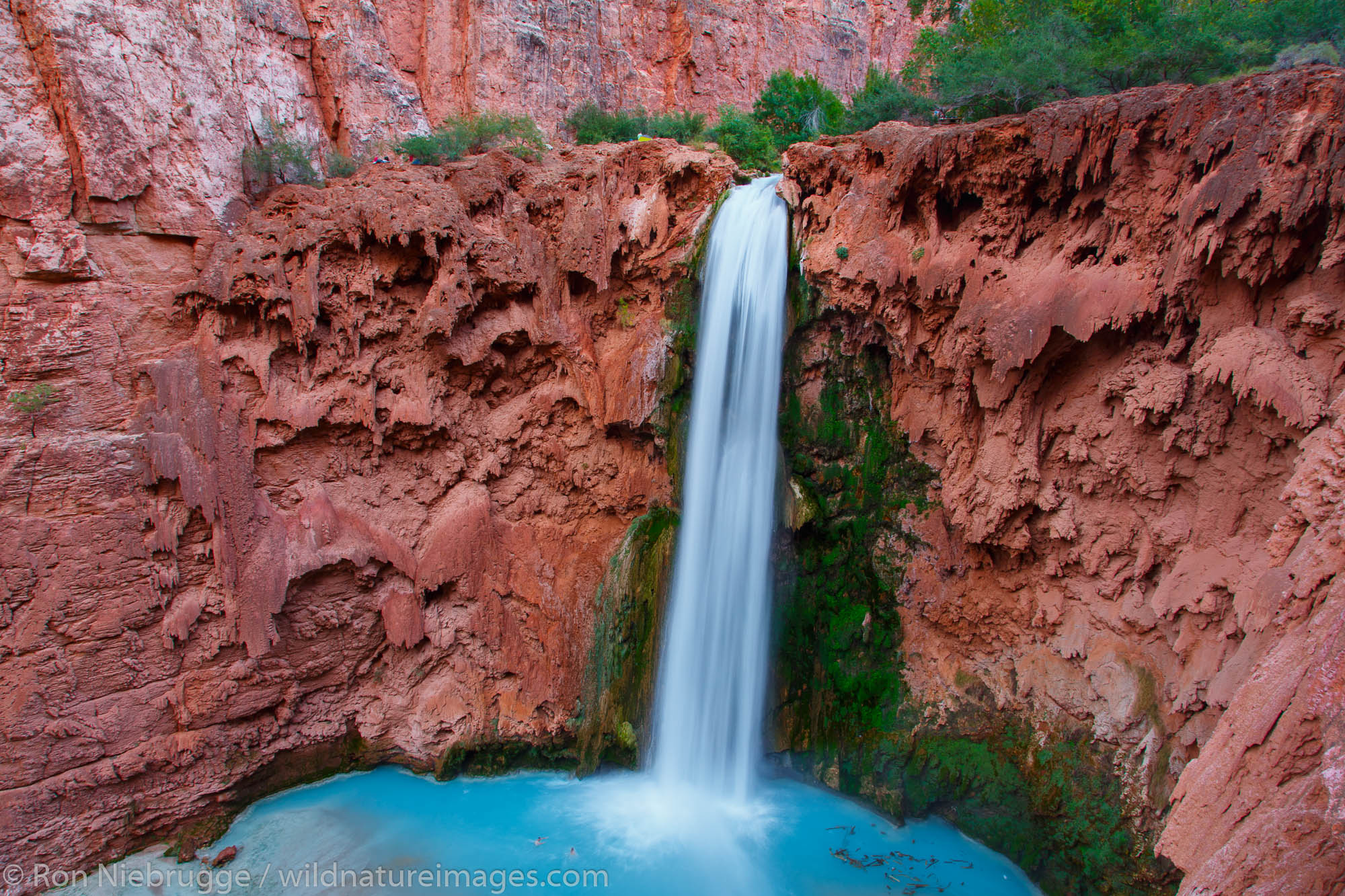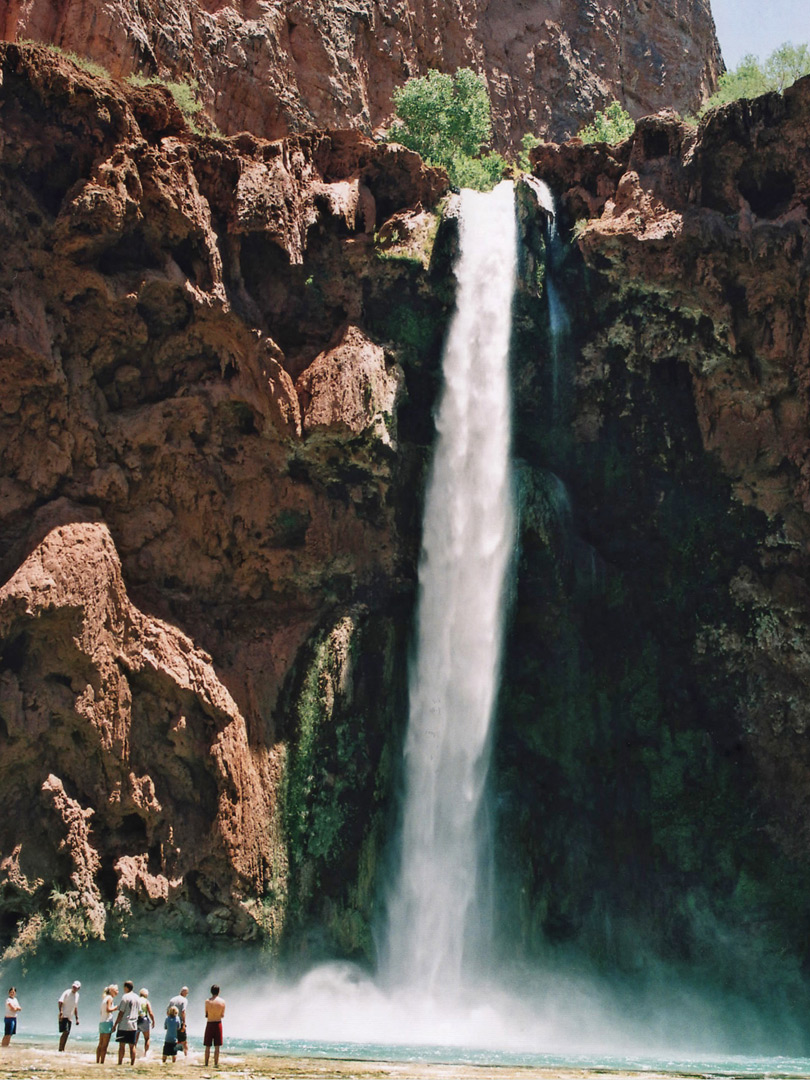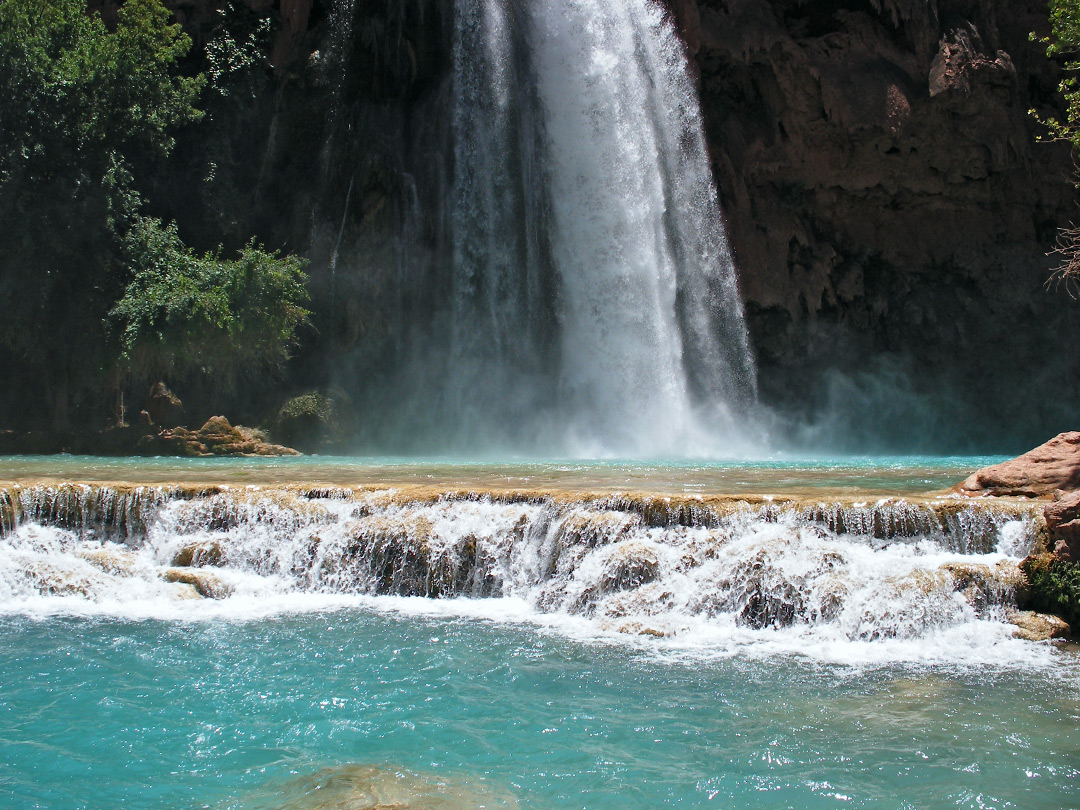Where the Desert Meets the Waterfall: Exploring Arizona’s Indian Reservations
Where the Desert Meets the Waterfall: Exploring Arizona’s Indian Reservations

Arizona, the land of scorching deserts and towering red rock formations, holds a secret: a network of stunning waterfalls nestled within its Indian reservations. These hidden gems offer a unique perspective on the state’s diverse landscape, blending natural beauty with the rich cultural heritage of its indigenous communities.
Imagine this: you’re trekking through a sun-baked canyon, the air thick with the scent of sage and juniper. Suddenly, the path opens up, revealing a cascading waterfall tumbling into a crystal-clear pool. It’s a sight that’ll make you forget you’re in the heart of the desert, a reminder that nature’s surprises are always waiting around the corner.
Related Articles: Where the Desert Meets the Waterfall: Exploring Arizona’s Indian Reservations
- Unveiling the Enchanting World of Indian Reservations in Florida
- Uncover the Hidden Gems of Indian Reservations in Livingston, Texas
- Discover the Hidden Gems of Native American Heritage in Richmond, Virginia
- Uncover the Thriving Spirit of Indian Tribes: Discoveries and Insights Await
- Uncover the Enduring Legacy: Discover the Thriving Indian Reservations of Today
But these waterfalls are more than just breathtaking scenery. They’re deeply intertwined with the history, traditions, and spiritual beliefs of the tribes who call these lands home. Visiting them isn’t just a chance to witness nature’s grandeur, it’s an opportunity to learn about a different way of life, a culture steeped in ancient wisdom and deep respect for the land.
Beyond the Beauty: A Glimpse into Cultural Heritage
Arizona boasts 22 federally recognized tribes, each with their own unique language, customs, and traditions. The waterfalls on their reservations are often sacred sites, holding spiritual significance and serving as reminders of their ancestral connection to the land.
For example, the Havasupai Tribe, known for their stunning turquoise-hued waterfalls in Havasu Canyon, consider the falls a sacred gift from the creator. Their ancestors have lived in this area for centuries, their connection to the land deeply rooted in their beliefs and practices.
Similarly, the Yavapai-Apache Nation, home to Montezuma Castle National Monument and the Tuzigoot National Monument, hold their waterfalls in high regard. These sites are not just beautiful, they’re also powerful reminders of their resilience and enduring spirit.
A Journey Through Time: Exploring the Reservations
Visiting these reservations isn’t just about admiring the waterfalls; it’s about immersing yourself in the rich history and culture of the tribes. Here are some of the must-see destinations:
- Havasupai Reservation: The crown jewel of Arizona’s waterfall destinations, Havasu Canyon offers a truly unforgettable experience. Hike down into the canyon, marvel at the turquoise waters of Havasu Falls, Mooney Falls, and Beaver Falls, and camp under a canopy of stars. Be warned: permits are required and limited, so plan your trip well in advance.
- Yavapai-Apache Nation: The Yavapai-Apache Nation offers a variety of cultural experiences, from visiting the ancient cliff dwellings of Montezuma Castle to exploring the ruins of the Tuzigoot settlement. The area also boasts several stunning waterfalls, including the cascading waters of Fossil Creek.
- San Carlos Apache Reservation: Nestled in the heart of the Apache territory, the San Carlos Apache Reservation boasts a unique blend of desert landscapes and lush riparian areas. Explore the Gila River, home to the enchanting Cibecue Falls, and learn about the Apache culture through their traditional arts and crafts.
- Fort Apache Reservation: This reservation, home to the White Mountain Apache Tribe, offers a chance to connect with nature and learn about their rich cultural heritage. Hike to the stunning Cibecue Falls, explore the Apache culture through their arts and crafts, and enjoy the breathtaking views of the White Mountains.


Beyond the Tourist Trail: Respecting the Land and its People
Visiting these reservations is an enriching experience, but it’s crucial to remember that you’re entering sacred lands. Respect the local customs, dress modestly, and avoid taking photos without permission.
It’s also important to support local businesses and artisans, helping to sustain the communities and their traditions. Remember, you’re not just a visitor, you’re a guest, and your actions have an impact.
A Journey of Discovery: Beyond the Waterfalls
While the waterfalls are undoubtedly captivating, these reservations offer so much more. Explore the local museums, immerse yourself in traditional dances and ceremonies, and learn about the tribes’ unique art and crafts.

For instance, the Havasupai Tribe is known for their intricate beadwork and woven baskets, while the Yavapai-Apache Nation is renowned for their pottery and silverwork.
The Importance of Tourism: Balancing Preservation and Progress
Tourism plays a crucial role in the economic well-being of these reservations. It provides jobs, supports local businesses, and helps preserve their cultural heritage. However, it’s important to ensure that tourism is managed responsibly, respecting the environment and the needs of the local communities.
The tribes themselves are actively working to protect their land and culture, striving for a balance between sustainable tourism and preserving their way of life.
A Final Word: Beyond the Picturesque
When you visit these reservations, don’t just snap photos and move on. Take the time to learn, to listen, and to connect with the people and their culture. You’ll walk away with more than just memories; you’ll gain a deeper understanding of the interconnectedness of nature, history, and culture.
FAQ: Arizona Indian Reservations with Waterfalls
Q: Are all the waterfalls on the reservations accessible to the public?
A: Not all waterfalls are accessible. Some may require permits, have limited access due to tribal regulations, or be located in sensitive areas. Always check with the tribe’s tourism office or website for specific details and guidelines.
Q: What are the best times to visit these reservations?
A: The best time to visit depends on the specific reservation and waterfall. However, spring and fall offer pleasant temperatures and fewer crowds.
Q: Do I need a reservation to visit these destinations?
A: Some reservations require reservations, especially for camping and hiking trails. Check the specific website for the reservation you plan to visit.
Q: What are the best ways to get to these reservations?
A: Most reservations are accessible by car, but some may require 4WD vehicles or hiking. Check the specific website for directions and transportation options.
Q: What should I pack for a trip to these reservations?
A: Pack for the desert climate, including plenty of water, sunscreen, and appropriate hiking gear. Also, consider packing a camera, binoculars, and a journal to capture the beauty and memories of your trip.
Q: Are there any cultural events or festivals I can attend?
A: Many reservations host cultural events and festivals throughout the year. Check the tribe’s website for details on upcoming events.
Q: How can I support the local communities?
A: Purchase souvenirs from local artisans, stay at tribal-owned hotels or lodges, and dine at tribal restaurants. These actions help support the local economy and preserve their cultural heritage.
Remember, visiting these reservations is not just a vacation; it’s an opportunity to learn, to connect, and to appreciate the rich tapestry of Arizona’s indigenous cultures.

Closure
Thus, we hope this article has provided valuable insights into Where the Desert Meets the Waterfall: Exploring Arizona’s Indian Reservations. We hope you find this article informative and beneficial. See you in our next article!